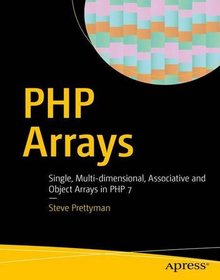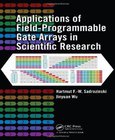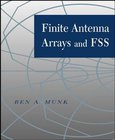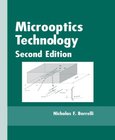PHP Arrays
Single, Multi-dimensional, Associative and Object Arrays in PHP 7

Book Details:
| Publisher: | Apress |
| Series: | Apress |
| Author: | Steve Prettyman |
| Edition: | 1 |
| ISBN-10: | 1484225554 |
| ISBN-13: | 9781484225554 |
| Pages: | 161 |
| Published: | Jan 18 2017 |
| Posted: | Apr 30 2017 |
| Language: | English |
| Book format: | |
| Book size: | 1.46 MB |
Book Description:
Gain an in-depth understanding of PHP 7 arrays. After a quick overview of PHP 7, each chapter concentrates on single, multi-dimensional, associative, and object arrays. PHP Arrays is a first of its kind book using PHP 7 that demonstrates inserting, appending, updating, and deleting array data. This book also covers validation methods to insure that the data provided by a user is good before the data is entered into an array. Youll see how PHP 7 try/catch modules are used to capture exceptions and errors that may be caused by invalid data.The code examples demonstrate common real-world scenarios. Moreover, examples of every PHP 7 array function (over 75) are demonstrated. The appendix provides a two-dimensional array case study on the logical design of a checkers game. PHP Arrays answers the following questions:Why do we need arrays? When do we need to use arrays? Are arrays efficient? Can arrays reduce coding time? When do you use multi-dimensional and associative arrays? What is an object array?What You'll LearnHandle array data from an HTML form Manage array data from a text file Deal with array data from a MySQL databaseWho This Book Is ForExperienced PHP programmers or web developers using PHP.
Download Link:
Related Books:
Applications of Field-Programmable Gate Arrays in Scientific Research
Focusing on resource awareness in field-programmable gate array (FPGA) design, Applications of Field-Programmable Gate Arrays in Scientific Research covers the principle of FPGAs and their functionality. It explores a host of applications, ranging from small one-chip laboratory systems to large-scale applications in "big science." The book first describes various FPGA resources, including logic elements, RAM, multipliers, microprocessors, and content-addressable memory. It then presents principles and methods for controlling resources, such as process sequencing, location constraints, and intellectual property cores. The remainder of the book illustrates examples of applications in high-energy physics, space, and radiobiology. Throughout ...
Finite Antenna Arrays and FSS
A periodic surface is an assembly of identical elements arranged in a one or two-dimensional array. Such surfaces have various effects on incident electromagnetic waves. Their applications range from antennas to stealth aircraft.This book discusses finite antenna arrays and how to minimize the radar cross section of these arrays."Ben has been the world-wide guru of this technology...Ben Munk has written a book that represents the epitomy of practical understanding." W. Bahret, United States Air ForceFrequency selective surfaces (FSSs) have important military and civilian applications including antenna theory, satellite communications and stealth technologyAuthor is an authory on the subject, having been instrumental in the development of st...
Microoptics Technology
Fabrication and Applications of Lens Arrays and Devices
2nd Edition
It has been five years since the publication of the first edition of Microoptics Technology. In that time, optical technology has experienced an unparalleled burst of activity that has produced a body of significant real results that have advanced new materials, devices, and systems. Building on the foundation of the first edition, this comprehensive reference presents an introduction and review of the optics and methods of microoptic elements with particular emphasis on lenses and lens arrays.The author explores advances that emerged from the flurry of activity over the last five years. With two new chapters and another fully expanded, the book covers...
2007 - 2021 © eBooks-IT.org



